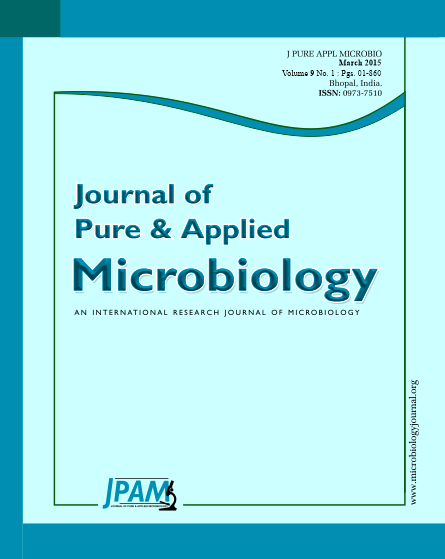Sugarcane mosaic virus (ScMV) causes yield losses in almost all the genotypes/clones of sugarcane. So the detection of ScMV is very important for disease management. In present study serological and molecular methods for rapid virus detections were used. Serological study including DAS-ELISA (Double Antibody Sandwich-Enzyme Linked Immunosorbent Assay) was optimized to identify the virus by using a monoclonal antibody. Leaf samples of sugarcane were collected from symptomatic and non-symptomatic plants. ELISA was done by sap extraction method. Total 80 cultivars of sugarcane were selected on the basis of morphological symptoms for ELISA test 70 % cultivars represented the presence of ScMV infection through ELISA. Two stepsRT-PCR (Reverse Transcriptase-Polymerase Chain Reaction) was performed for detecting ScMV using a pair of primers design to amplify a fragment in the coding region of ScMV coat protein. 93.75% cultivars showed the presence of ScMV infection through twostep RT-PCR. Further it was found that two step RT-PCR method is more stringent and will be used for the detection of low titer sample which were not detected by DAS-ELISA. In conclusion our findings suggest that ELISA and RT-PCR can be routinely used for ScMV detection with high efficiency of which RT-PCR is most reliable technique.
Sugarcane genotypes, ScMV, DAS-ELISA, RT-PCR, serology
© The Author(s) 2015. Open Access. This article is distributed under the terms of the Creative Commons Attribution 4.0 International License which permits unrestricted use, sharing, distribution, and reproduction in any medium, provided you give appropriate credit to the original author(s) and the source, provide a link to the Creative Commons license, and indicate if changes were made.


